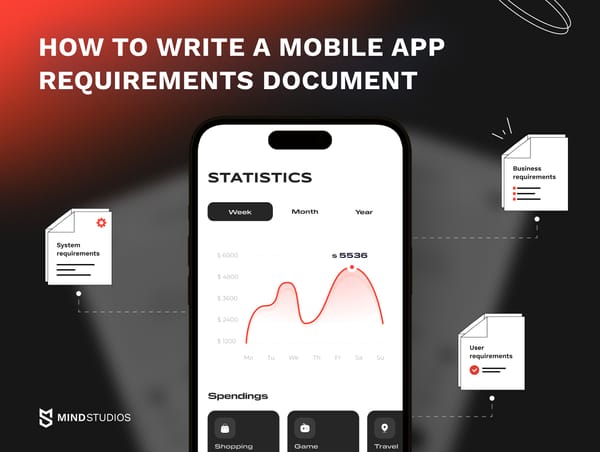The principles of customer development were devised by Steve Blank way back in the 1990s. So why does every third startup continue to fail because of ignoring them?
Customer development tends to be a painful process. It requires startup founders to shift their mindset. Instead of blindly believing that their ideas and gut feelings are rock-solid, they need to find gaps in their ideas, prove themselves wrong, and invalidate their hypotheses. Who wants to beat themselves up of their own will?
You do. Because you don’t want to join the ranks of startup failures.
In this article we will dive deep into customer development process and many more. Keep reading.
Why do you need to practice customer development?
You want to build a successful, marketable product. But it’s impossible to achieve this goal — no matter how advanced or reasonably priced your product is — if customers aren’t willing to pay for your product. And a transaction can take place only where, in the mind of the consumer, the efficiency with which your product solves their problem outweighs the price.
The customer development method is an approach for providing you with the widest and deepest insights into your potential customers’ minds, problems, and product expectations prior to writing any code or drawing any pixels.
By practicing customer development, you will:
- Get a clearer picture of how your target audience actually behaves along with their habits and routines
- Eliminate the risk of pumping money into a product no one wants to buy
- Unveil new ways to differentiate your product
- Reduce the scope of your product and correctly prioritize features for your MVP
- Identify features for your post-MVP product version to improve the customer experience
Where should you start with customer development?
If you start a new business, we recommend you take these three initial steps before running customer development:
- Conduct market research
- Analyze your competitors
- Fill out a business model canvas using information you collect in steps 1 and 2
Doing this customer development process can help you and your team make a bunch of different, sometimes contradictory, assumptions regarding:
- The problem: What problem you’re going to solve and how your product will solve it
- The product: How you’re going to produce your product, what resources you may require, what providers you’re going to involve, how you’re going to make money, and how you may deliver your product to customers
- The customer: How your target customers think and act, what they need and want, what products they tend to use to solve their current issues, and how they make buying decisions
If you’ve already got a product or a loyal customer base, you can make assumptions by exploring existing customers’ experiences.
After collecting your assumptions, keep them on hand. You’ll return to them continually throughout the customer development process — at first as a source of potential customer profiles and questions to ask, and later to review their viability.
Now it’s time to construct succinct hypotheses, clustering your assumptions by problem, product, and customer. These problem hypotheses can sound like this:
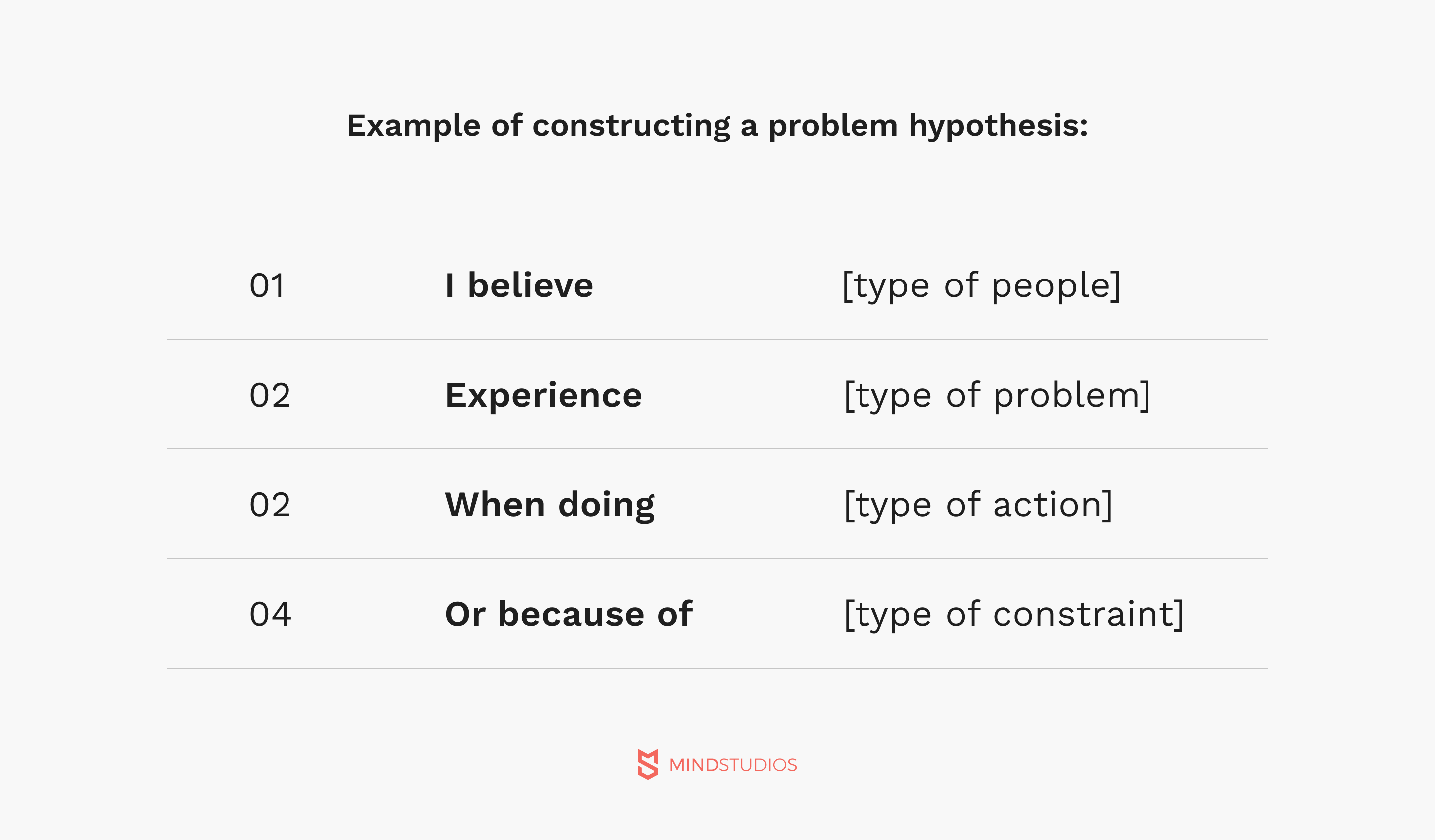
Where:
- The type of people refers to who you need to talk to (target customer profiles)
- The type of problem determines what you need to ask potential customers about (specifics of questions)
- The type of action or constraint has to do with why eventual customers will be eager to use your product (reasons to pay for it)
With hypotheses ready, you need to validate or invalidate them by interacting with your potential customers — that is, by going through a four-step customer development process.
4 steps of customer development process
According to Steve Blank, the customer development process consists of two main phases that can be broken down into four steps:
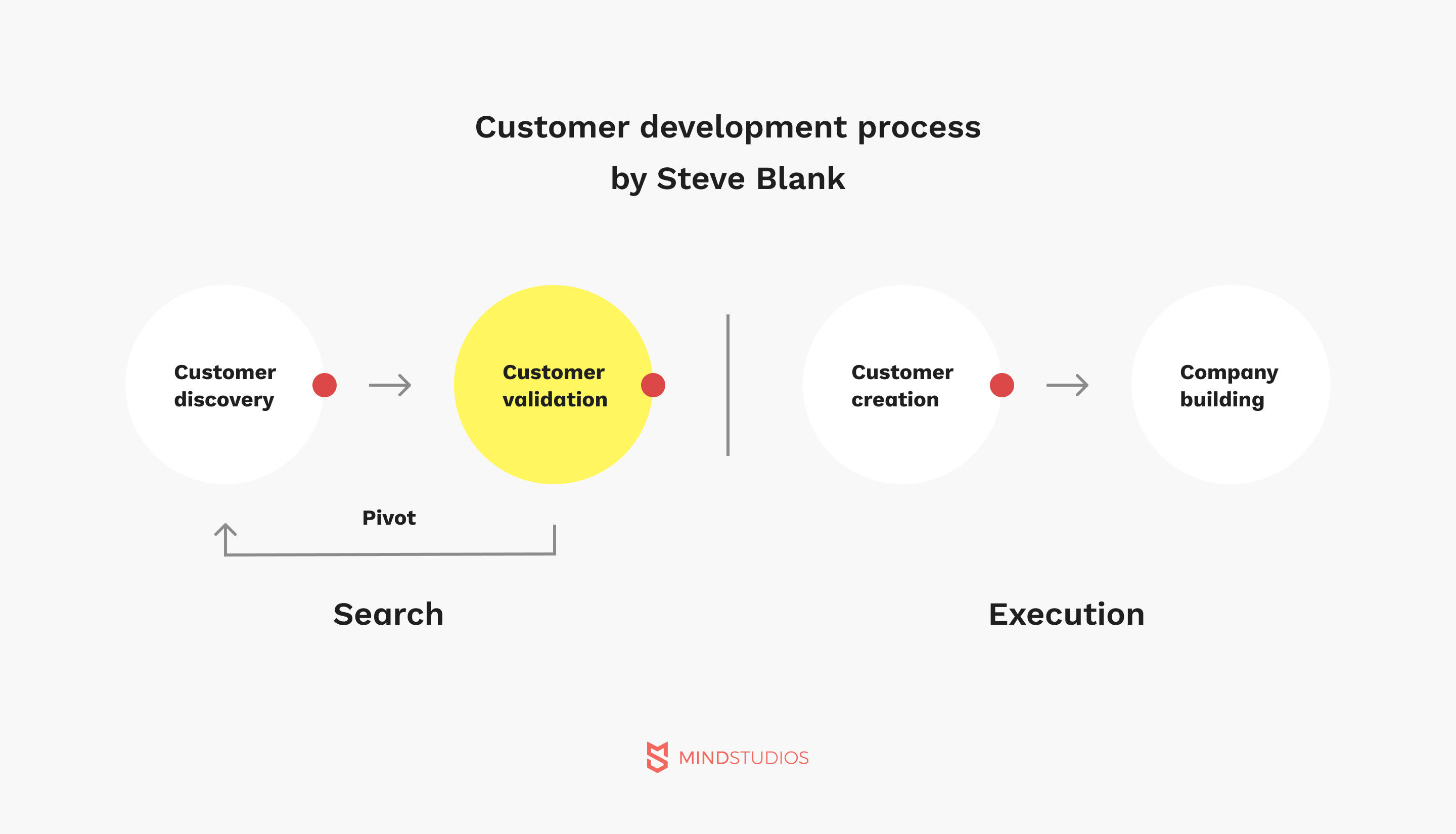
So what is the customer business development process? To help you learn about it, let’s go over the details of each step of customer development.
Step 1. Customer discovery
When starting pre-product customer discovery, you likely have a vague notion of whether you rightly understand the problem you’re going to solve and whether you’re solving the right problem. Your product idea is new, potential customers don’t know you, and you don’t know what your potential customers look like.
At this step, you need to:
- Map your target customer profile
- Find the right people to interview customer development among all 8 billion people in the world
- Make those right people want to talk to you
- Ask the right questions to receive exhaustive information through interviews
- Revise your hypotheses according to feedback
Identify your target customer profile
So, who do you need to talk to first? Your best interviewees are those who are open to innovation, extremely concerned with solving the same problem as your product will solve, and able to see value beyond the surface of an imperfect, work-in-progress product version. In other words, according to the innovation adoption curve, you need to focus on innovators (2.5% of users) and early adopters (13.5%).
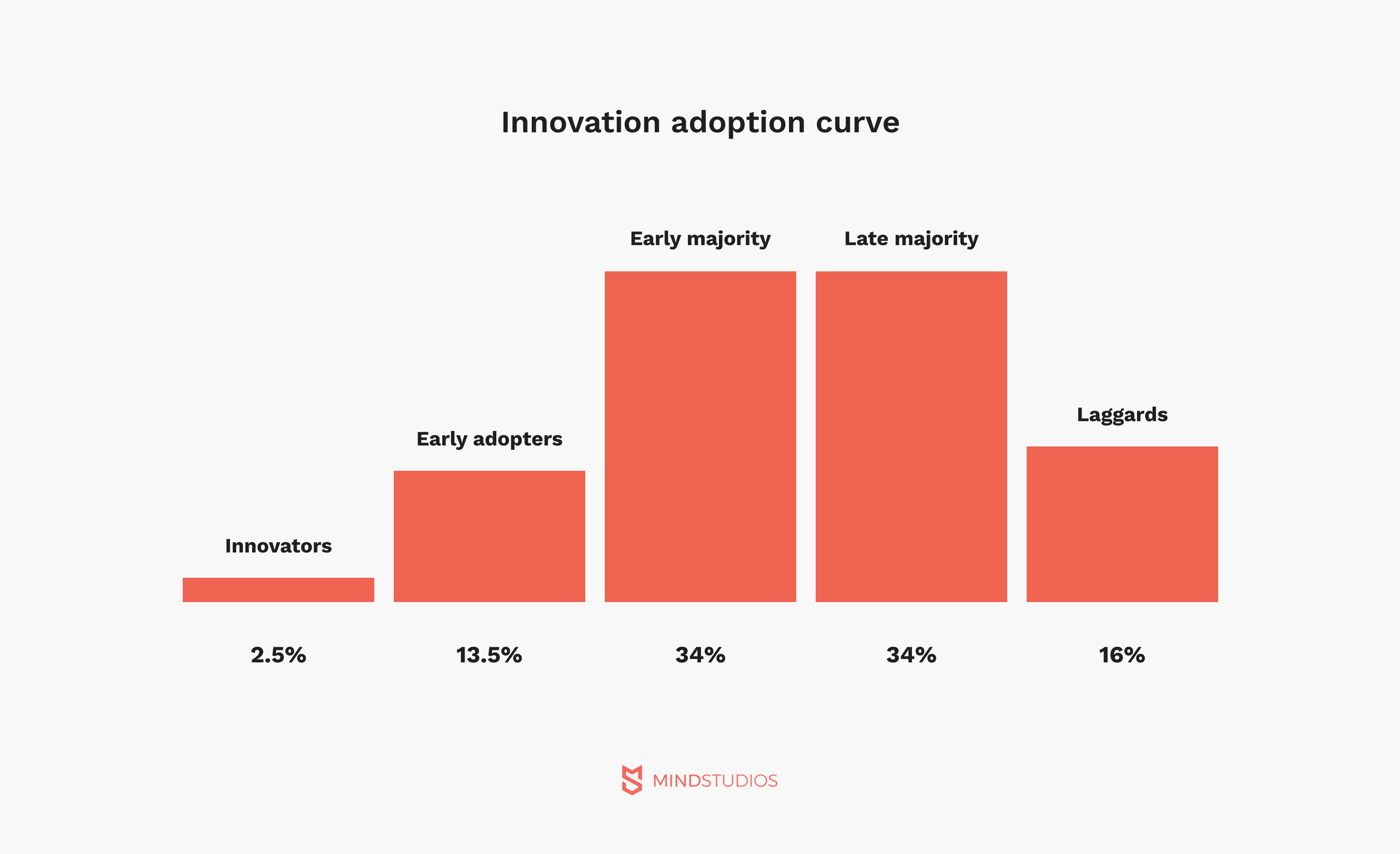
To map your target customer profile, we suggest you use the following three approaches:
Approach #1. Draw opposite traits on a spectrum. This customer development method was introduced by Cindy Alvarez, the author of Lean Customer Development. It involves brainstorming with your team about possible customer behavioral attributes and putting opposite attributes on a spectrum. Then, think about whether a particular attribute is relevant to your target customer and, if so, where they fit on this spectrum.
Approach #2. Run a three-question stud. With the help of your team, think of the core problem your product aims to solve and who is experiencing this problem. Try to distinguish at least three customer groups and break them down according to the three following criteria:
- Size: How many representatives does a specific customer group have?
- Pain/payment: How willing is the particular customer group to pay for solving the problem?
- Accessibility: How easy is it to access representatives of the chosen customer group?
Evaluate each customer group according to these criteria using a scale from 1 to 10. Then summarize the total group score. The customer group that has the highest score is the one you should appeal to first.
Approach #3. Go by your average check size. By conducting market research and calculating predictive unit economics, you’ll find your appropriate check size. This can become solid criteria for specifying your target customer profile. Your line of logic might look like this:
- Who is able to pay [your check size] for solving [the problem your product solves]?
- What are their monthly/annual salaries?
- What is their occupation/location/education?
- Where do they hang out and congregate?
To define your customers’ demographics and solvency, you can use job search sites like Glassdoor and Indeed or go to official government websites like the US Bureau of Labour Statistics.
Decide whom to interview
After you and your team define your customer profile, you need to check out whether such people exist in real life. Where can you find prospects who correspond to your target customer criteria?
Besides looking among your own circle of acquaintances, you can use the following sources for pre-product search:
- Social media: LinkedIn, Twitter, Facebook, Instagram
- Forums: Reddit, Quora
- Video streaming services: YouTube, TikTok, Twitch
- Your competitors: blogs, social media accounts, Google Play Store/Apple App Store pages
- Private online communities: topic-specific, membership-based, mailing lists
- Blog aggregators: Alltop, Blogarama, Blogs
- Amazon reviews
- Business conferences and educational activities, both online and offline
- Sports and entertainment events
- Online survey tools like SurveyMonkey
- Landing page with a poll promoted by Google AdWords
All you need is to define keywords relevant to your niche and rely on them when searching for people who have recently commented/liked/disliked/tweeted specific posts or videos and who have a specific job, live in a specific location, or have the type of education of your target user. Choose those who best fit your target customer profile and contact them.
If you already have a product, then your sources for finding customers to talk with may be different:
- Company’s live chat system
- Website blog
- CRM system
- Company’s social media accounts (Twitter, LinkedIn, Facebook, Instagram)
- Company’s YouTube channel
While searching for valuable customer development interviews, you’ll accumulate a variety of comments and reviews from potential customers that you’ll likely want to put together. Why not use a halo strategy spreadsheet for that?
Customers’ most common hopes, dreams, pains, fears, barriers, and uncertainties, illustrated with screenshots or links, can help you subsequently form powerful hooks to encourage people to talk to you.
Convince individuals to talk to you
Once you’ve compiled a list of target customer representatives, you need to invite them to an interview. What is in your arsenal are cold emails, messages, and elevator pitches. If you do things right, about every third invitation should lead to an interview.
To achieve an even better response ratio, you can follow three rules for writing cold emails:
- Be personal. Show your respondents that you’re not a robot. Start with their name and mention how you found them. Try to make them feel special.
Tip: Assure respondents that you want to solve their problem and only they have valuable information or solid expertise that can help you. Provide them with VIP treatment. - Be valuable. Highlight that the conversation you’re going to have is also valuable for the interviewee because you’re striving to meet their current needs or solve their pressing issues.
Tip: Tell them that you appreciate their feedback. In extreme cases, you can offer financial incentives. - Be short. Your first email or message should be no longer than seven sentences.
Tip: Increase trust by telling your potential interviewee that you’re not from sales.
Let me share an example of an invitation letter I recently sent on LinkedIn to ten CEOs of car rental companies to convince them to give me interviews for an article (actually, it had a 50% response rate):
Conduct exploratory interviews
After you get confirmation from potential customers that they don’t mind talking to you, you need to get well-prepared for these first-time interviews.
Keep in mind that exploratory interviews are not for:
- Talking about your product
- Pitching your product
- Imposing your own opinions
The best exploratory interviews are those where your respondents talk more than you. To get vital information from your potential customers, you can follow several proven practices:
-
Start with the five basic customer development questions to get respondents talking:
- Tell me about how you do _________ today.
- Do you use any [tools/products/apps/tricks] to help you get ________ done?
- If you could be able to do anything that you can’t do today, what would it be?
- Last time you did ___________, what were you doing right before you got started? Once you finished, what did you do afterward?
- Is there anything else about _________ that I should have asked?
-
Always ask open-ended questions:
- Can you tell me more about how that process goes?
- Who is involved in making that decision?
- Last time you did ______, how long did it take?
- Where did you most recently go to buy ______?
- May I ask why you came to that conclusion?
-
Avoid:
- Yes/no questions
- Hypothetical questions
- Leading questions
- Questions that make your respondents feel nervous or encourage them to lie
-
Create a confident atmosphere:
- Don’t judge your respondents
- Don’t transmit negative feedback about their responses
- Don’t force a conversation
At the end of exploratory interviews, ask respondents for permission to contact them again to verify your solution.
Fix the most important insights & revise your problem hypothesis
Be ready for the fact that preliminary interviews can turn your product vision on its head. Potential customers can unveil crucial things that you’ve missed or, on the contrary, can reveal the insignificance of problems you considered important.
After you complete exploratory interviews, consider the most important insights — especially those that disprove your hypotheses — and update your assumptions:
- Who your target customers are
- What in-market habits are intrinsic to your target audience
- Why your potential customers need your product
- When and how often customers need your product
- Where customers need you product
Step 2. Customer validation
Just as customer discovery gives you a clearer picture of your target audience’s wants and needs, the customer validation process focuses on verifying what features your product must and should have to properly meet those needs. In other words, going through the customer discovery process, you test your problem hypothesis. While conducting customer validation, you test your product hypothesis.
Customer validation methods include interviews that should help you figure out:
- Whether you rightly understood the problem your product needs to solve
- Whether the features you plan to provide customers within your product have the power to properly solve that problem
- Customers’ first impressions of your product idea
You can summarize what respondents say in previous exploratory interviews and continue to ask them clarifying questions like these:
- How long does that process take?
- Why do you think that happens?
- What’s the consequence of that happening?
- Who else is involved in decisions like this?
- Where else do you see this kind of mistake?
- When was the last time you did that task?
Try to get the most specific information regarding problems, situations, or tasks your potential customers recently faced and frequently face.
Be uncompromising and avoid having people talk to you about the features they want your product to provide. It’s better to guide them back to talking about the problem. Because what they say they want will differ from what they really need. Keep in mind Henry Ford’s quote:
“If I had asked my customers what they wanted, they would have said a faster horse.”
After you complete your customer discovery survey and customer validation steps, you’ll get exhaustive information about what customer problems your product needs to solve and in what sequence. Preliminary market research, competitor analysis, and customer development will extremely impact your product development and inform your:
- Product requirements documentation
- Product development roadmap
- Product scope
- Feature prioritization
Step 3. Customer creation
Once you’ve built a product prototype, built a minimum viable product, or added a new feature to an existing product, you need to test it. It’s best to get feedback from respondents you’ve already interviewed.
To do this, ask them to take part in satisfaction-oriented interviews where you’ll find out:
- Which parts of your product work well and which do not
- Whether your potential customers are satisfied or unsatisfied with your solution
- What you can do to make some features work better for your customers
At this point in the customer development process, you can turn to other useful customer development solutions other than one-on-one interviews:
- Build a net promoter score framework and ask testers to rate their overall experience using your product
- Ask respondents to rate their attitudes to a particular product feature using a customer satisfaction score poll
- Use online testing services like UserTesting
- Organize focus groups
Focus groups can help you get no less exhaustive information about your respondents’ experiences but in a shorter time than individual interviews. To effectively organize focus groups, go back to your notes from customer discovery and validation interviews, find individuals with similar opinions, and combine interviewees into groups of three to five people. Through group interactions, allow users to test your product and discuss what they like or dislike.
Satisfaction-oriented interviews and other options of gathering feedback are doubly useful since you not only get a full understanding of how to make your product marketable but form your product’s army of earlyvangelists. These people will gladly advertise your product to anyone they know because they strongly believe in you and your product’s potential to relieve their pain points. This is what you can get as a successful outcome of the customer creation step.
Step 4. Company building
After launching your MVP or adding extra features to an existing solution, it’s important to keep on improving your product. The fourth step of customer development is repeatedly iterating by talking to customers, learning from feedback, and making necessary shifts to your product that will lead your company to success.
Now, you need to conduct efficiency customer development interviews that are aimed at eliciting:
- Useful and convenient features
- Weak and unnecessary features
- Ways to make your product better serve its customers
If you strive to build a sustainable business, customer development interviews should become a standard part of your team’s monthly routine throughout the whole product lifetime.
Fortunately, the ongoing customer development process will likely not be so time-consuming as the initial development process. You can get valuable feedback from employees who are already talking to your customers day to day:
- Customer support managers
- Sales representatives
- Email marketing specialists
Building user personas off your customer development
Done well, customer development results in a lot of insights received from different people that need to be put in order. You can start with finding similarities in interviews with your potential customers and, based on them, create user personas.
User personas are descriptions of fictional people who represent groups of target users with similar characteristics (e.g. market behavior, demographics, interests, preferences, needs).
User personas can help you:
- Increase empathy towards your target users
- Ensure all stakeholders in product development understand who your target users are
- Draft well-defined user requirements and keep them in front of the development team’s eyes
As a rule, our designers draw up user persona profiles with four main blocks:
When you’re thinking of scaling your business, promoting your product, and expanding your market share, you can sharpen your marketing campaigns to fit your ideal customer profile (ICP). Unlike user personas that reflect attributes of existing customers, an ICP contains characteristics of a fictional customer (in the case of a B2B business, a fictional company) that you would love to serve.
Customer Development: Recap
Customer development can be helpful whether you’re starting a completely new business, creating a new product for your established customer base, or adding features to your existing product. However, customer development predominantly provides quantitative data. With this in mind, we strongly recommend you do not build a new product or change an existing product guided only by customer development outputs — chances are, you’ll build the wrong product.
Only a wise combination of quantitative research (customer development) and qualitative research (calculating KPIs, analytics, and unit economics) can help you turn your assumptions into actionable, effective product solutions. You’ll also need a reliable software development team, of course. You can benefit from our experience building working software products.

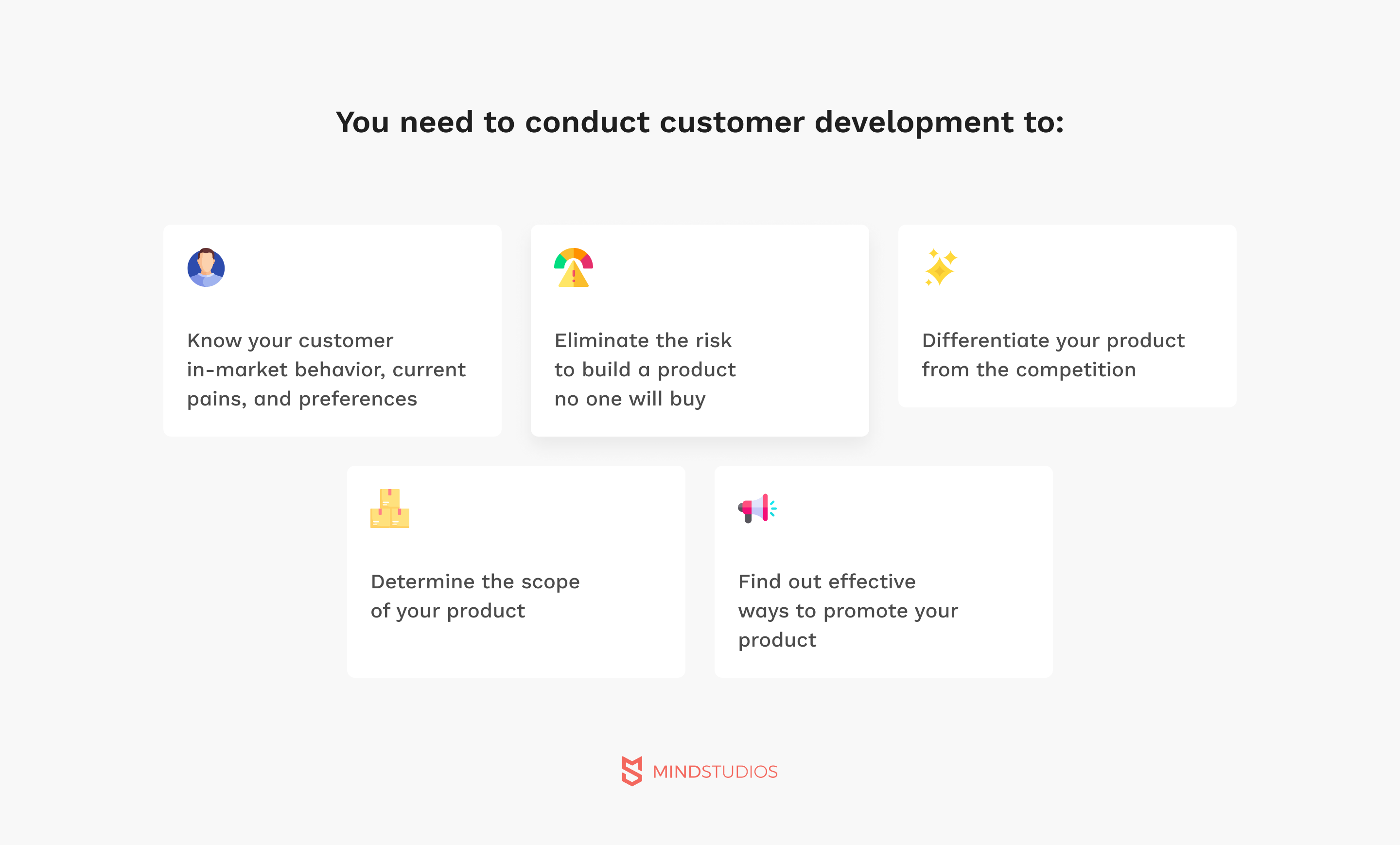
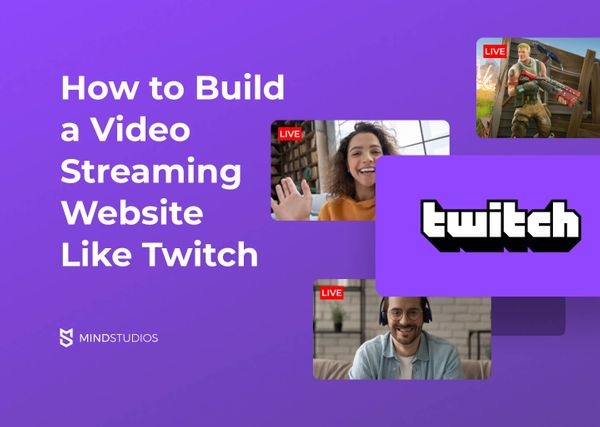
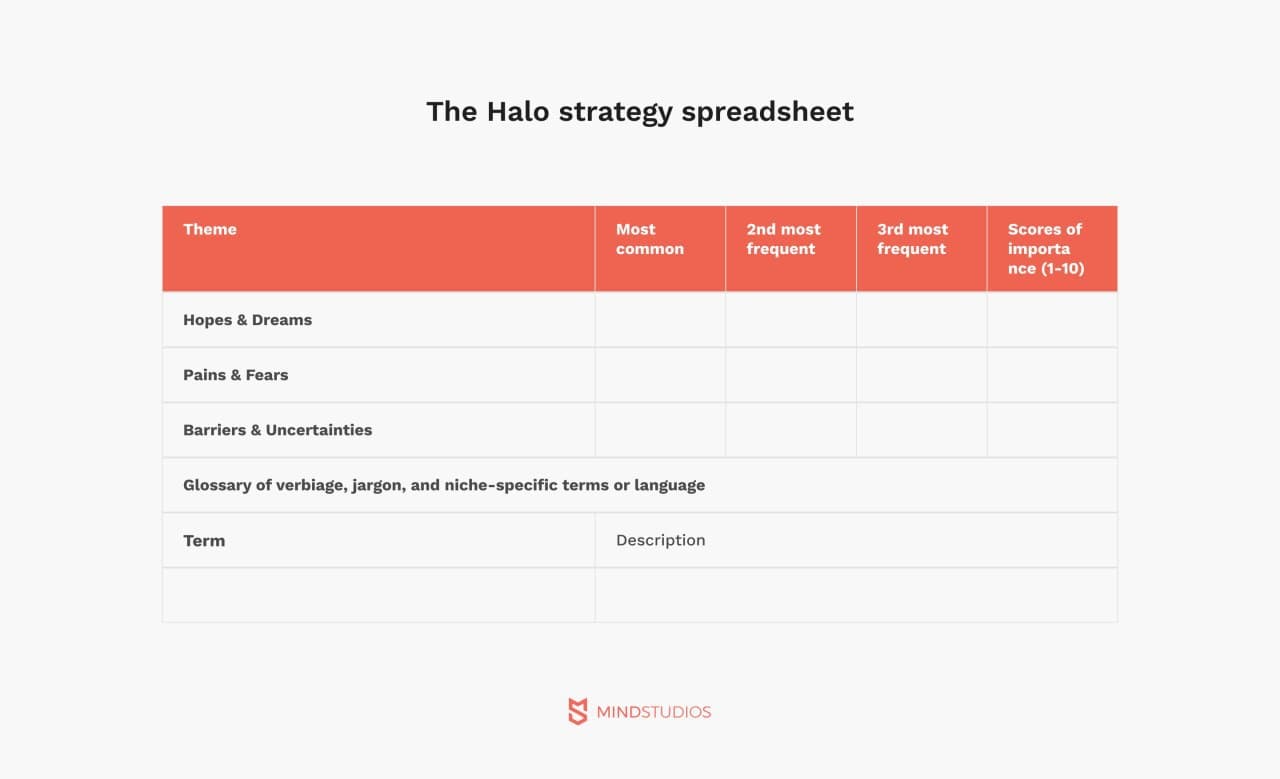
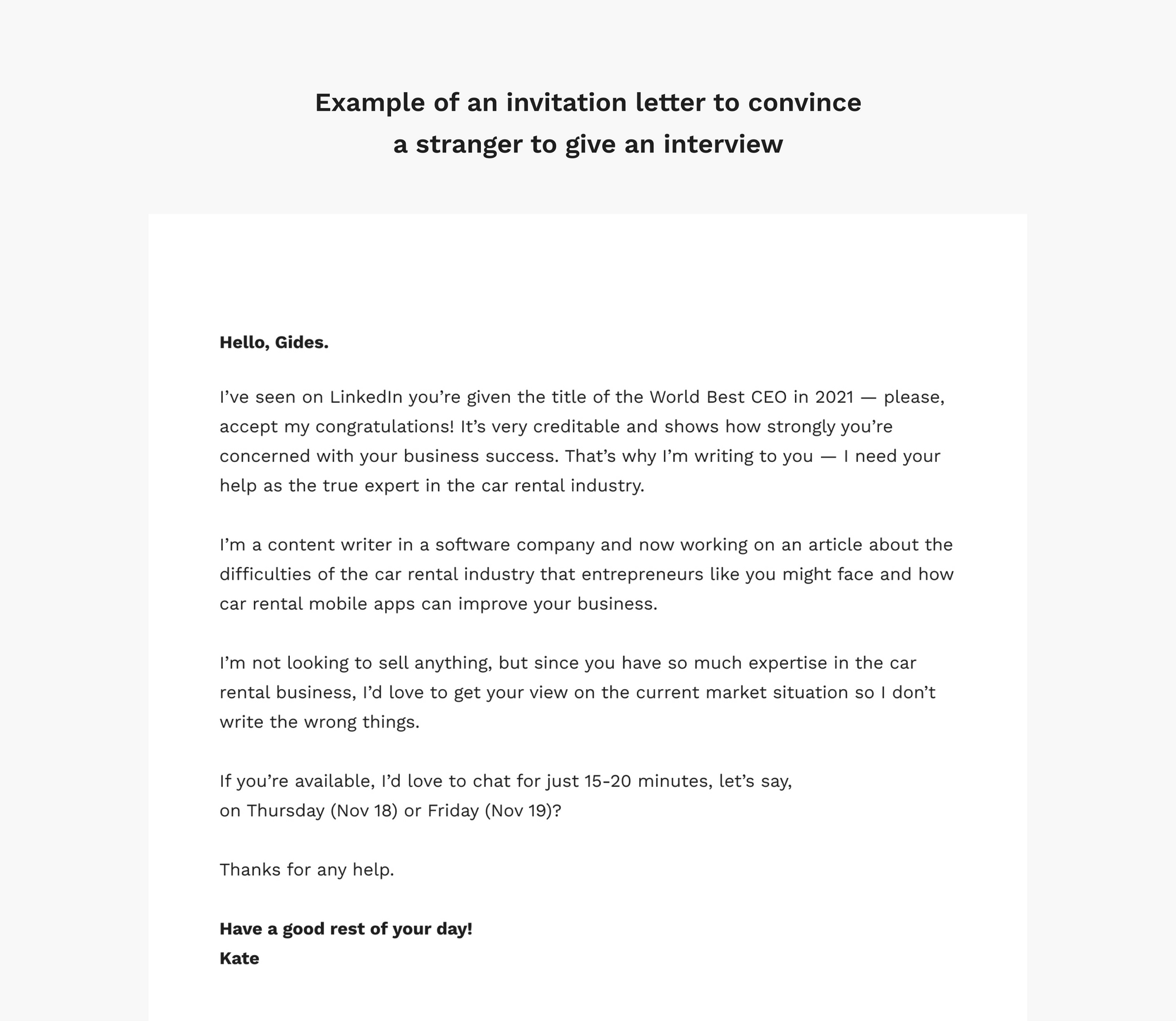
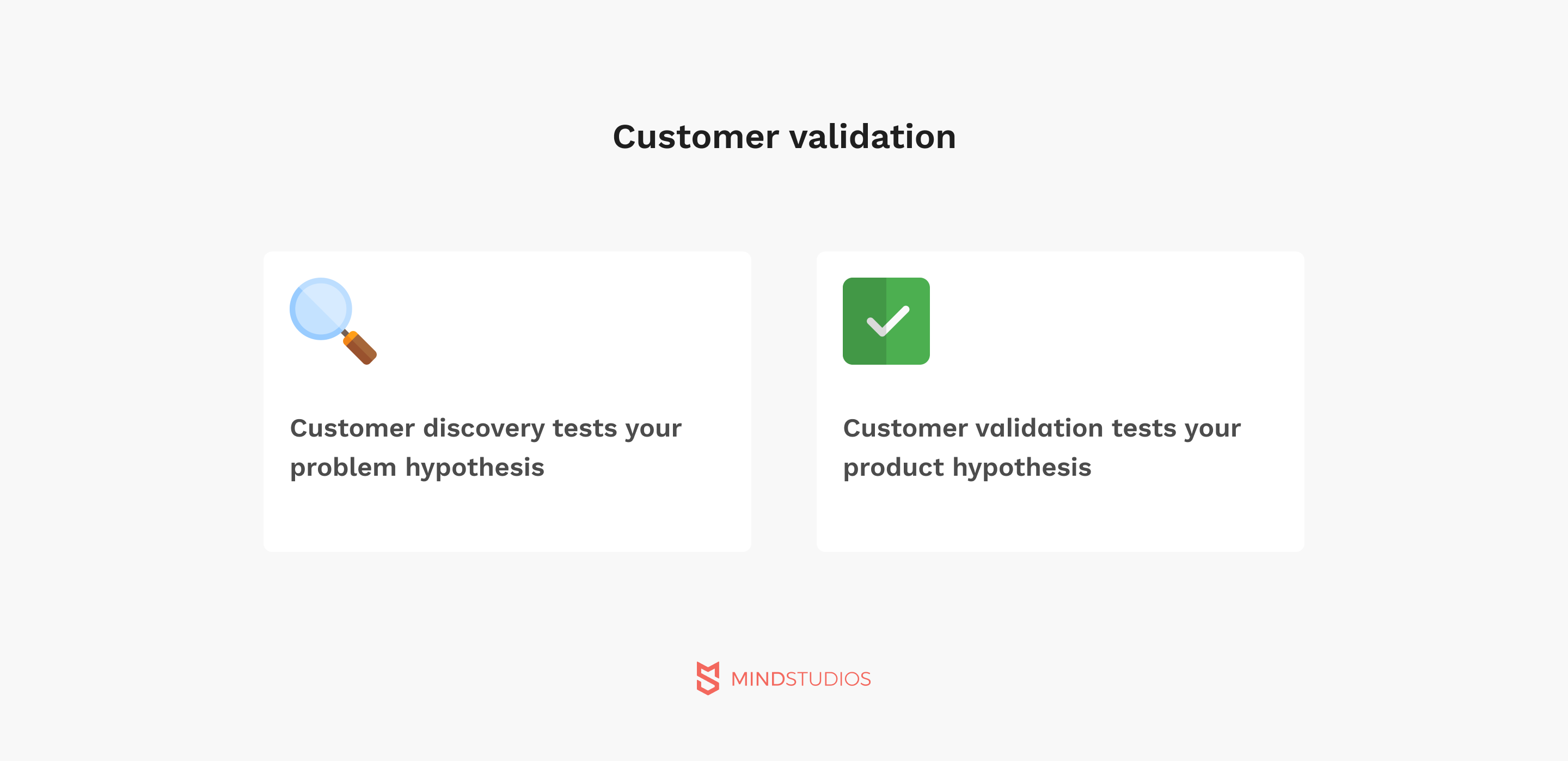
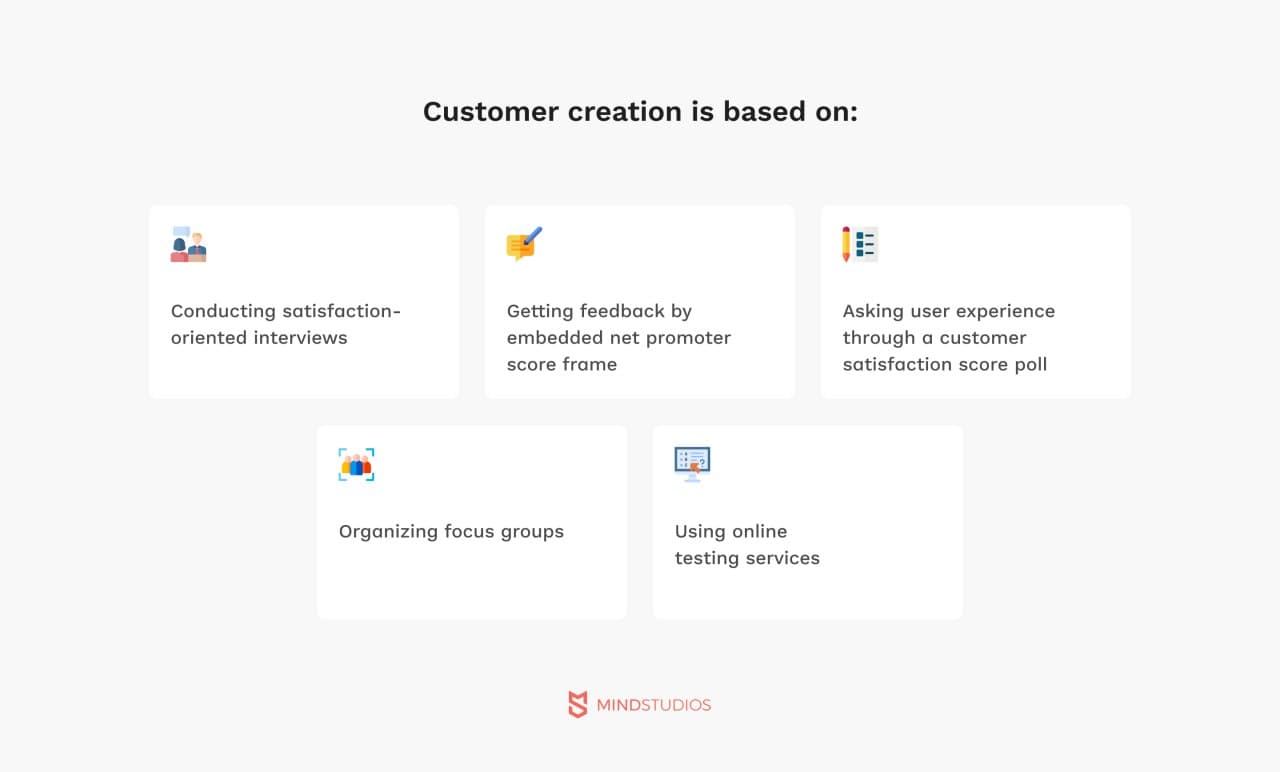
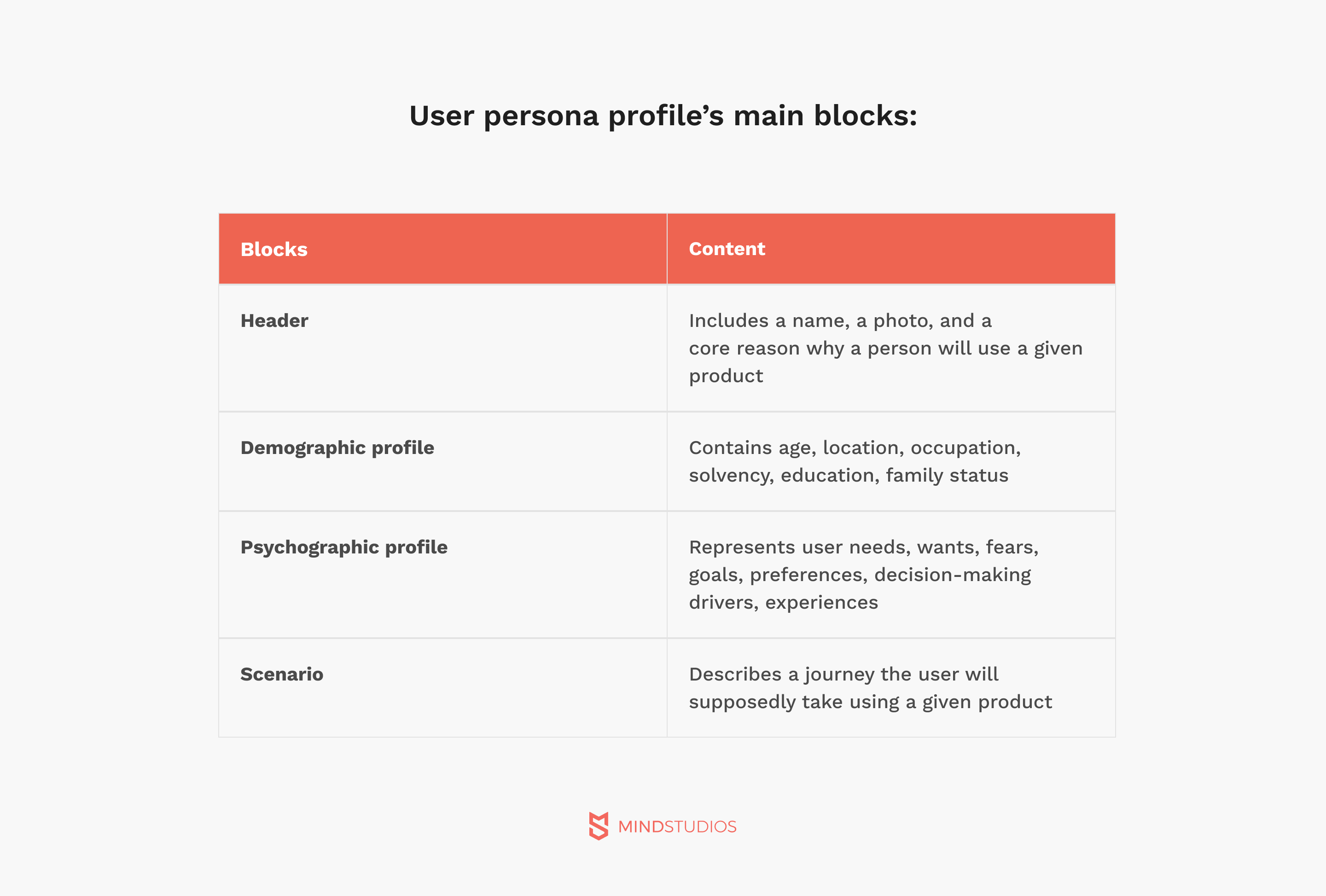
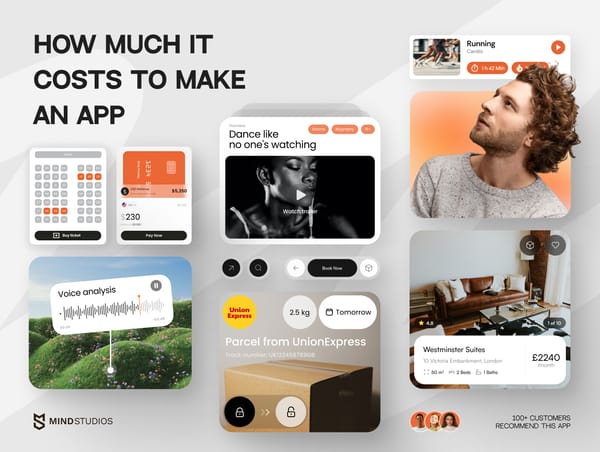
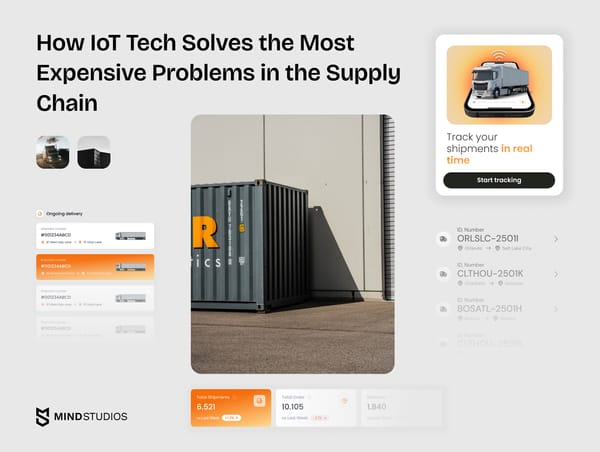
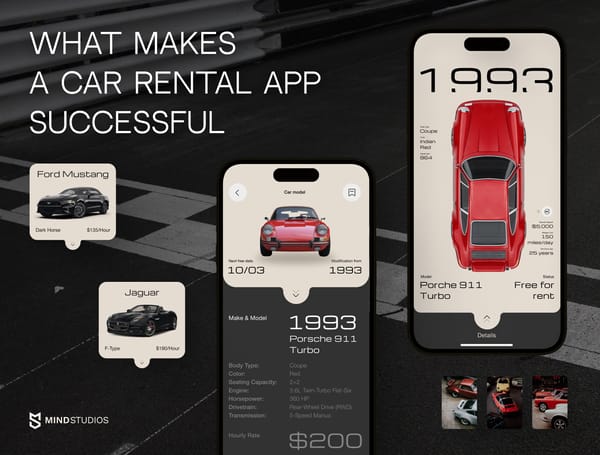
![How to Create an On-Demand Medicine Delivery App [Expert Guide]](https://themindstudios.com/blog/content/images/size/w600/2025/03/IMG-1-Cover-6.jpg)
